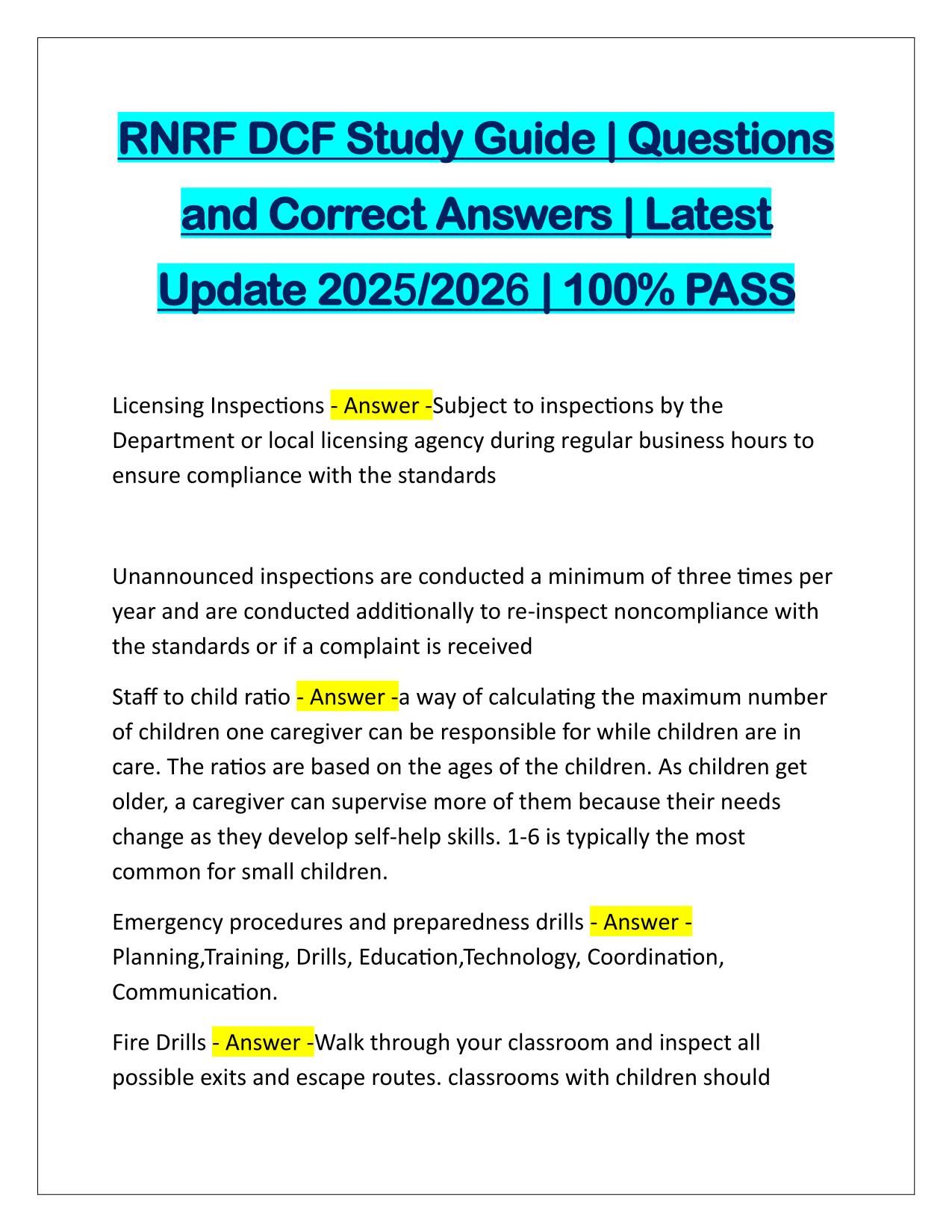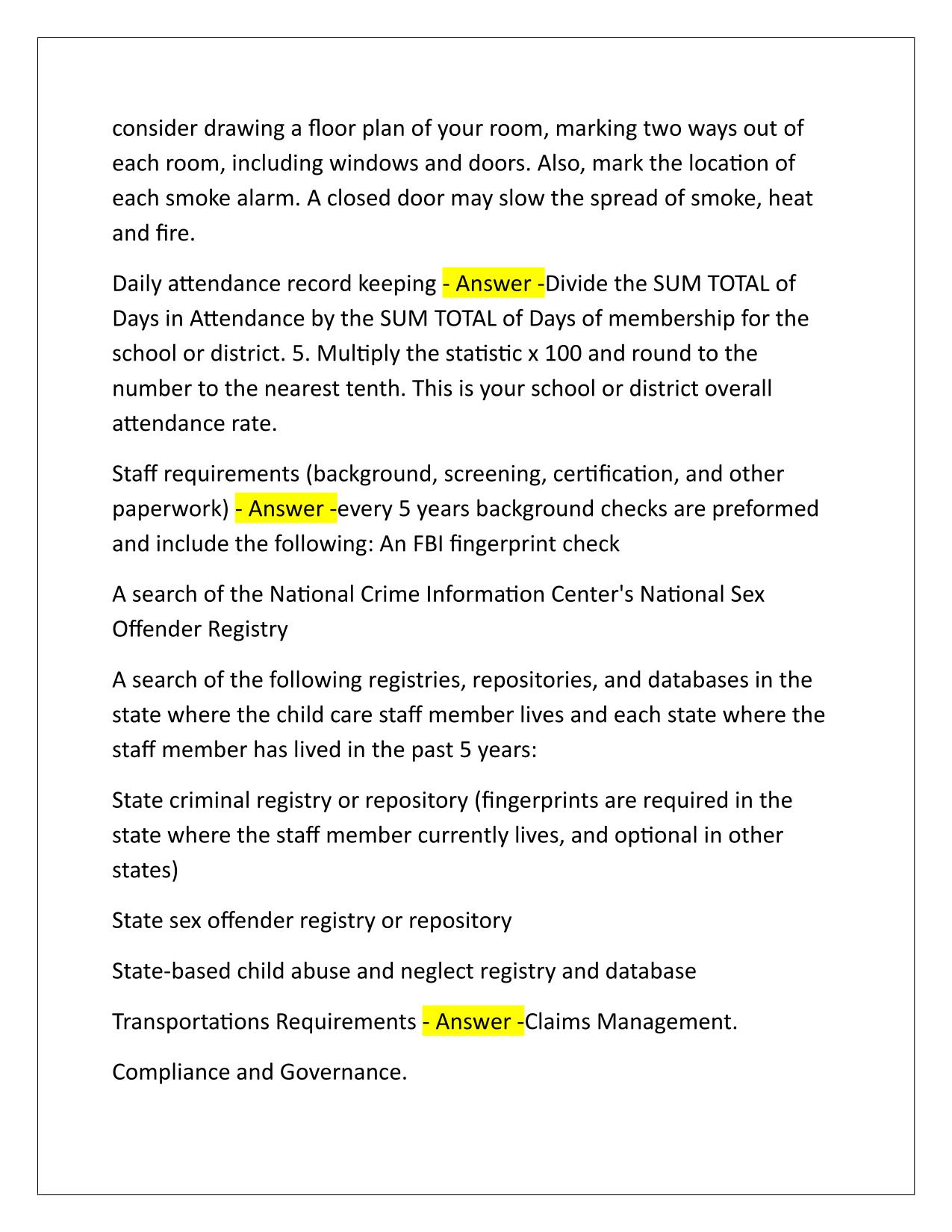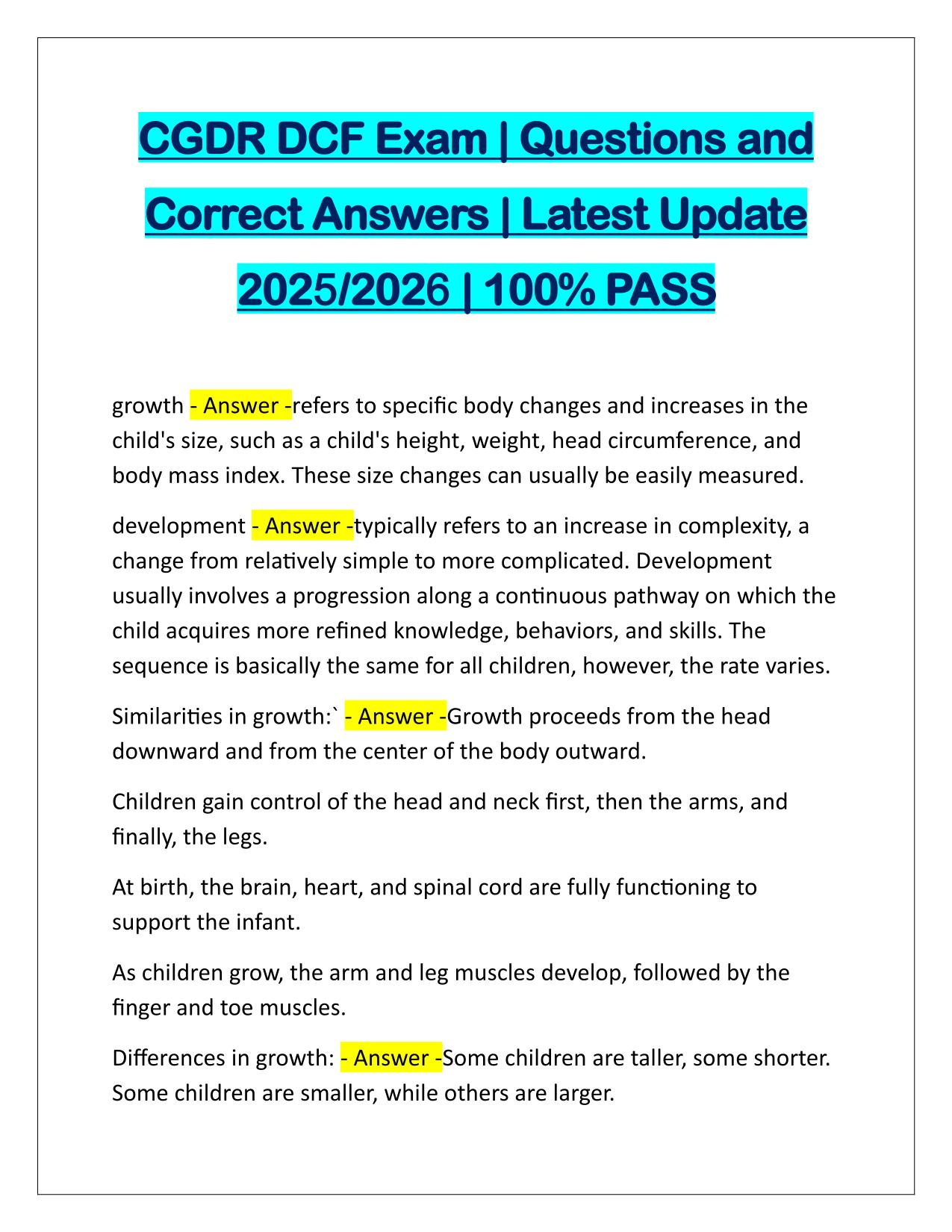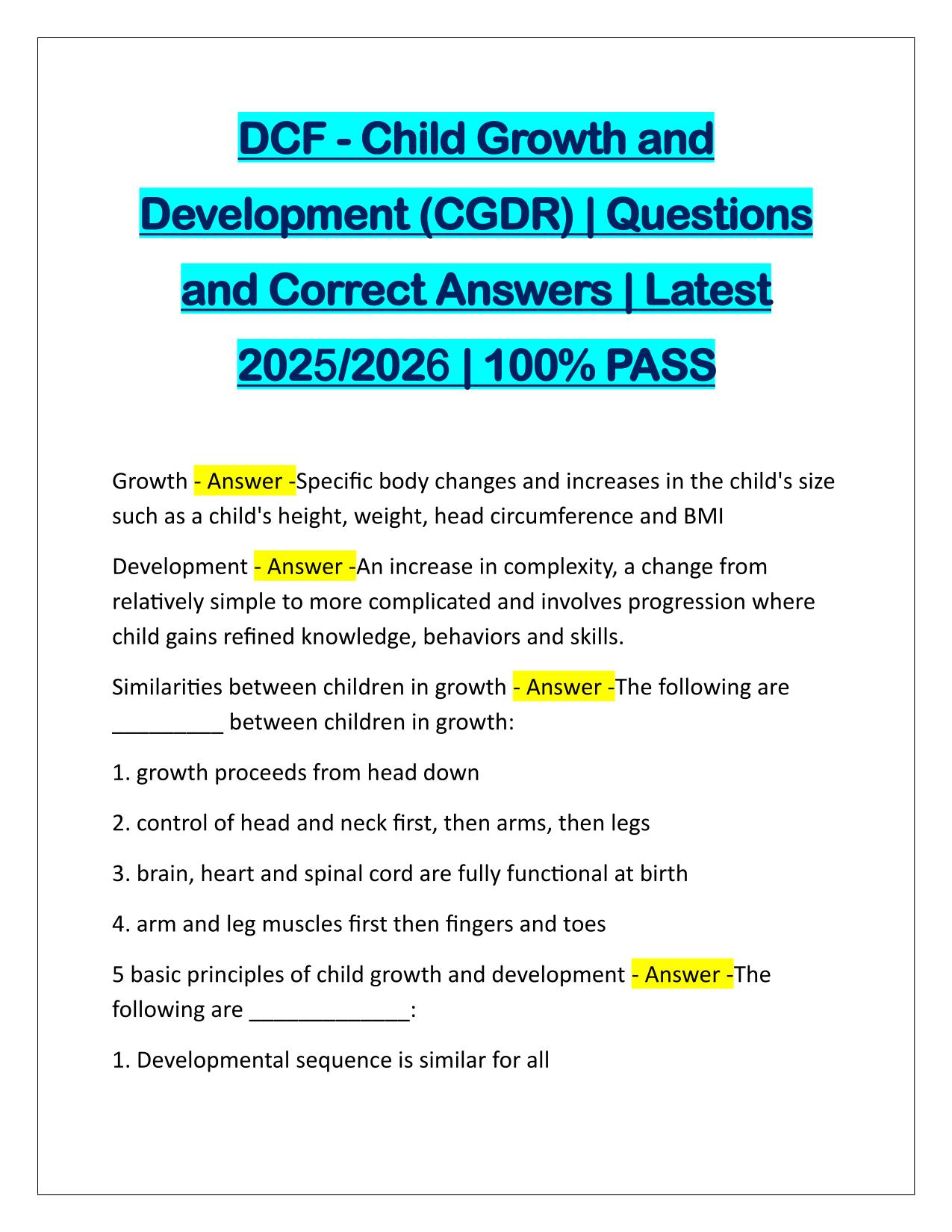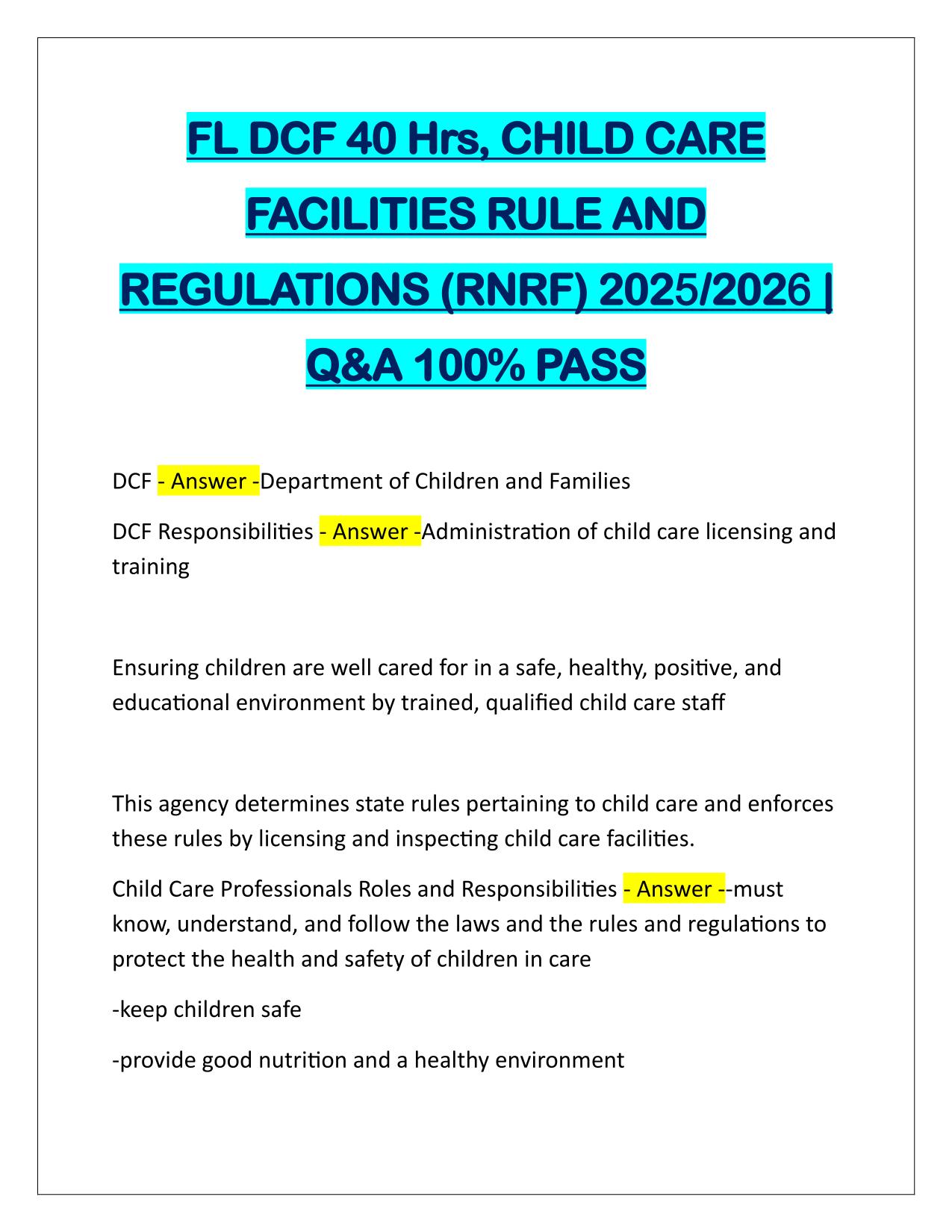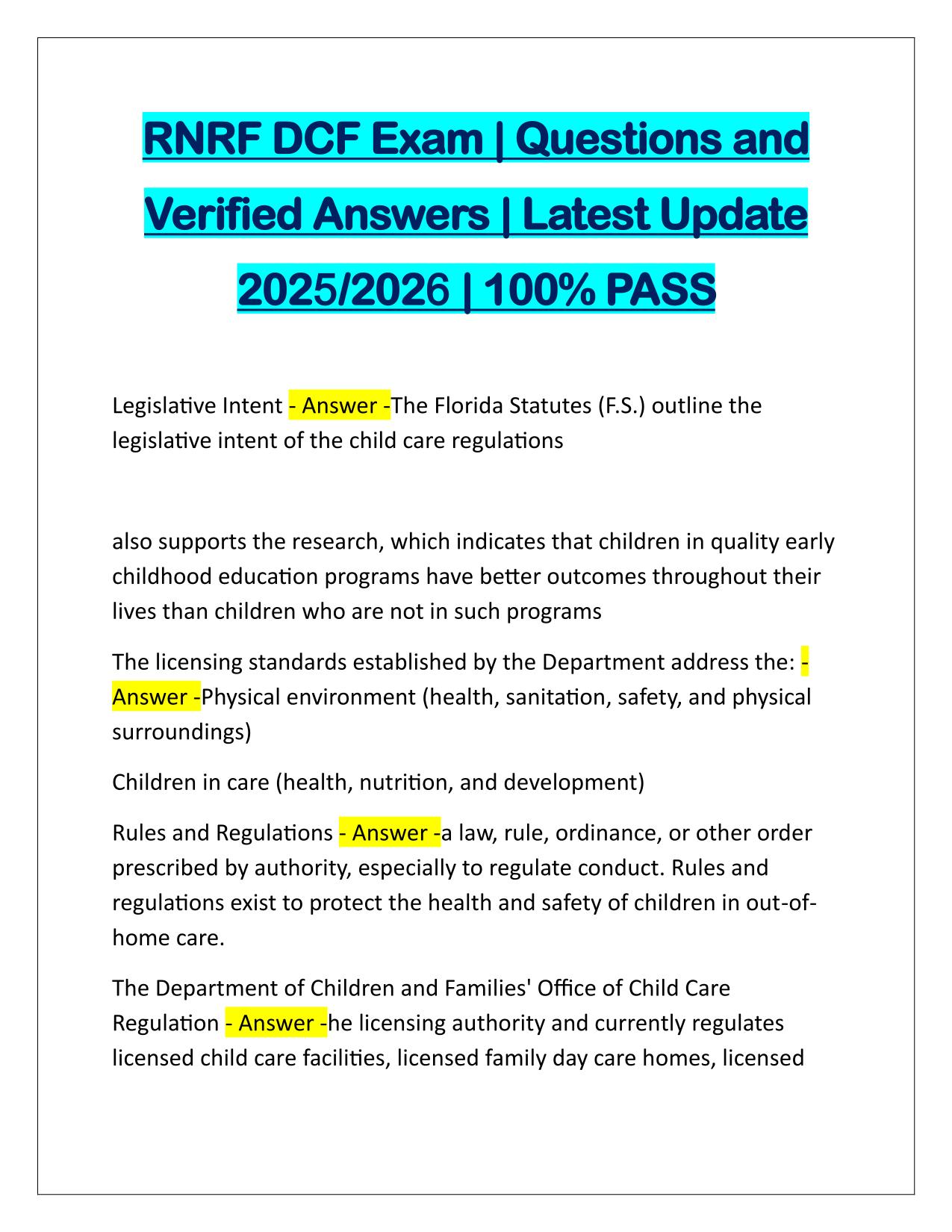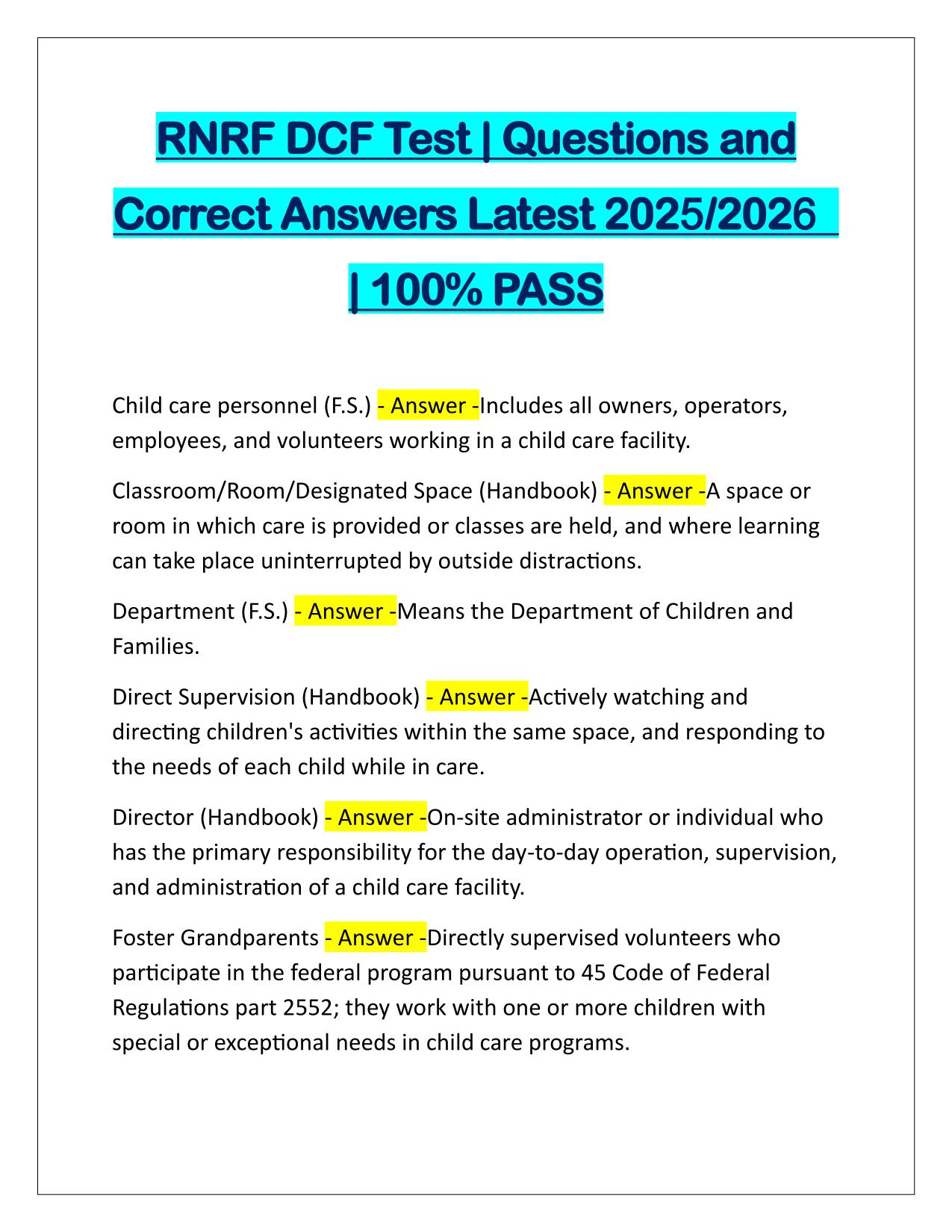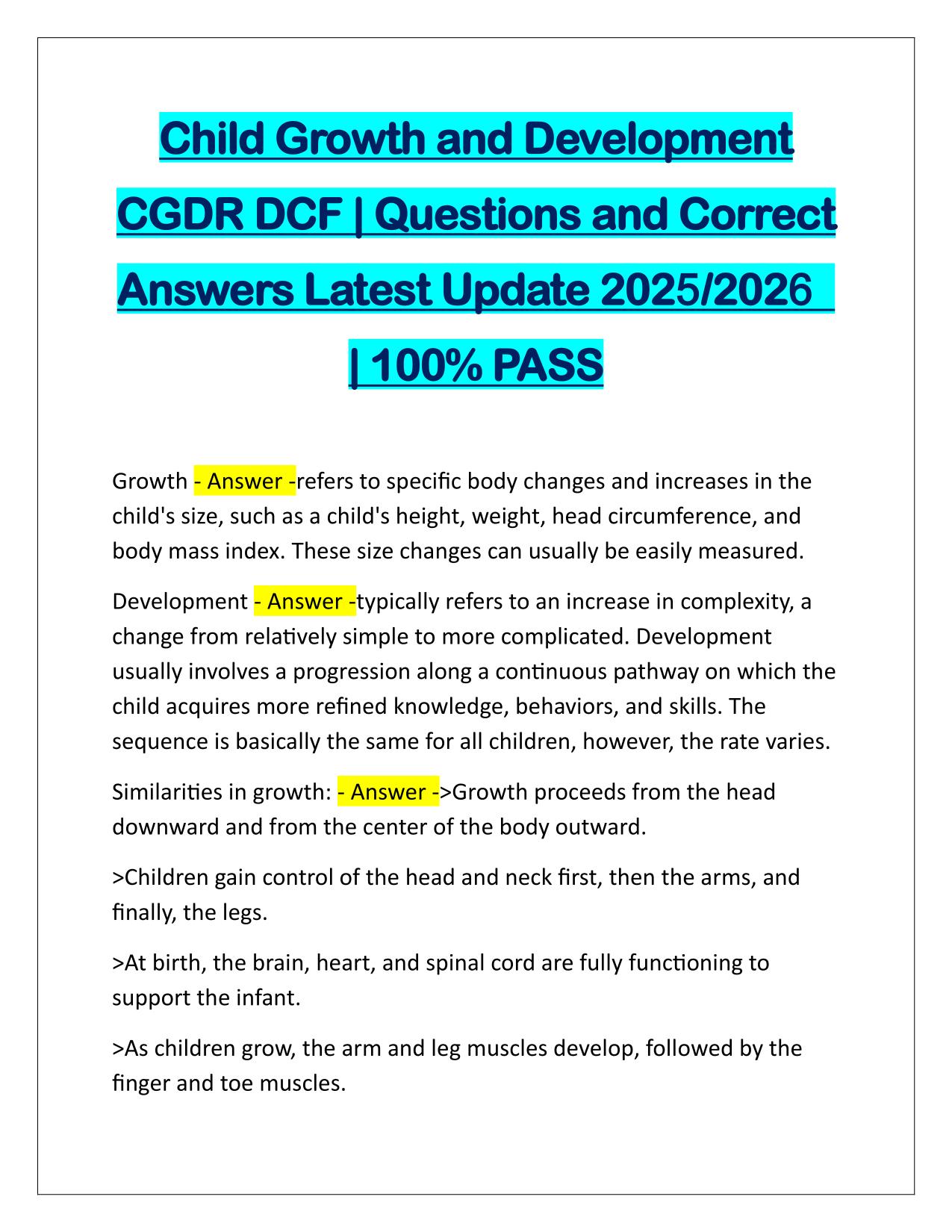RNRF DCF Study Guide Correctly Answered Latest Update
Course:
RNRF DCF
Institution:
RNRF DCF
RNRF DCF Study Guide Correctly Answered Latest Update
After purchase, you get:
✅ Instant PDF Download
✅ Verified answer explanations
✅ Refund if not Satisfied
✅ Prepared for 2025/2026 test cycle
Document Information
| Uploaded on: | May 21, 2025 |
| Last updated: | July 18, 2025 |
| Number of pages: | 17 |
| Written in: | 2025/2026 |
| Type: | Exam (elaborations) |
| Contains: | Questions & Answers |
| Tags: | RNRF DCF Study Guide Correctly Answered Latest Update |
Seller Information

AdelineJean
User Reviews (0)
Exam (Elaborations)
$8.00
Bundle Deal! Get all 7 docs for just $14.99
Add to Cart
100% satisfaction guarantee
Refund Upon dissatisfaction
Immediately available after purchase
Available in Both online and PDF
$8.00
| 0 sold
Discover More resources
Available in a Bundle
Content Preview
RNRF DCF Study Guide | Questions and Correct Answers | Latest Update 2025/2026 | 100% PASS Licensing Inspections - Answer -Subject to inspections by the Department or local licensing agency during regular business hours to ensure compliance with the standards Unannounced inspections are conducted a minimum of three times per year and are conducted additionally to re-inspect noncompliance with the standards or if a complaint is received Staff to child ratio - Answer -a way of calculating the maximum number of children one caregiver can be responsible for while children are in care. The ratios are based on the ages of the children. As children get older, a caregiver can supervise more of them because their needs change as they develop self-help skills. 1-6 is typically the most common for small children. Emergency procedures and preparedness drills - Answer Planning,Training, Drills, Education,Technology, Coordination, Communication. Fire Drills - Answer -Walk through your classroom and inspect all possible exits and escape routes. classrooms with children should
